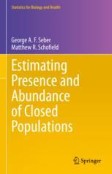Search
Search Results
-
Assessing water diversion impacts on the fish community size structure in headwater stream stretches
Water diversion for hydropower plants is one of the leading causes of habitat alteration and biotic homogenization. The impacts of small hydropower...

-
Habitat associations and demographics of a newly recorded population of taillight shiner in Illinois
The taillight shiner, Notropis maculatus (Hay in Proc United States Natl Museum 3:488-515, 1881), primarily occurs in the southeastern United States,...

-
Distribution and abundance of the Patagonian lamprey (Geotria macrostoma) in the largest unfragmented river of southern Patagonia, Argentina
The distribution, relative abundance, and rearing habitat of larvae of the Patagonian lamprey ( Geotria macrostoma ) were investigated in the Santa...

-
Identification of suitable tributaries to compensate fish habitat loss in dammed rivers using environmental DNA metabarcoding
Using unregulated tributaries to compensate fish habitat loss in dammed mainstreams has recently been suggested as a promising strategy for river...

-
Contribution of invasive carp (Cyprinus carpio) to fish biomass in rivers of the Murray–Darling Basin, Australia
Following the introduction of the ‘Boolarra’ strain to Australia in the mid 1960’s, Common carp ( Cyprinus carpio ) rapidly spread in waterways across...

-
A restructured Bayesian approach to estimate the abundance of a rare and invasive fish
Quantifying invasive species abundance informs management and control strategies. However, estimating abundance can be challenging, particularly when...

-
Fishing gear performance nearshore is substantiated by spatial analyses
We estimated whether the fish assemblages nearshore represented by electrofishing and gillnetting indexed location of reservoirs in a river basin. We...

-
Artificial floating islands: a promising tool to support juvenile fish in lacustrine systems
Habitat complexity of freshwater ecosystems has been decreasing due to human impacts. Therefore, conservation and environmental management actions...

-
Recovery of white-spotted charr Salvelinus leucomaenis following the removal of stocked red-spotted masu salmon Oncorhynchus masou ishikawae in a small headwater tributary of Lake Biwa, central Japan
The possible recovery of a white-spotted charr population in a small tributary of a river to Lake Biwa, following removal of previously stocked...

-
Brown trout in Oder estuary tributaries: genetic structure, stocking, and admixture
Several rivers that are tributaries of the Oder estuary are inhabited by Salmo trutta L, the most important of which are Ina, Gowienica, and...

-
Not all methods are created equal: assessment of sampling methods for crayfishes and fishes in southern Appalachian streams
We compared the effectiveness of three sampling methods (kick seining, electrofishing, and nest trap**) to collect crayfishes and fishes,...

-
Title: detection of juvenile coho salmon (Oncorhynchus kisutch) indicates widespread successful reproduction and different life-history strategies in the extreme south of Patagonia
The native fish biodiversity of Patagonia has been highly modified by a long history of salmonid introductions from the Northern Hemisphere for...

-
Removal and Change-in-Ratio Methods
This chapter is about the so-called removal method for estimating the size of a closed population. It consists of removing a sequence of samples from...
-
Habitat use of invasive monkey goby (Neogobius fluviatilis) and pumpkinseed (Lepomis gibbosus) in Lake Balaton (Hungary): a comparison of electrofishing and fyke netting
Detailed knowledge on the habitat preference of invasive fishes and the bias of different fishing methods in determining their population dynamic...

-
Effects of invasive bigheaded carp and environmental factors on larval fish growth
Silver carp Hypophthalmichthys molitrix and bighead carp H. nobilis (collectively bigheaded carp) are abundant planktivorous invasive species in...

-
Seasonal and diurnal patterns of littoral microhabitat use by fish in gravel pit lakes, with special reference to supplemented deadwood brush piles
The habitat quality of the littoral zone is of key importance for almost all lentic fish species. In anthropogenically created gravel pit lakes, the...

-
Fish community structure varies by location and presence of artificial islands: a case study in Hamilton Harbour, Lake Ontario
Artificial islands and reefs have been used in the Laurentian Great Lakes for over 40 years as a means of improving aquatic habitat; but research on...

-
Trophic impact of Neogobius melanostomus in a restored site on the Old Rhine River (France)
Habitat changes induced by restoration can favour invasive species, thereby thwarting the main biological objectives of restoration and possibly...

-
Effectiveness and outcomes of invasive species removal in Hawaiian streams
Despite aquatic invasive species (AIS) being a widely recognized threat to native biodiversity in streams on subtropical and tropical oceanic islands...

-
Development of a ddPCR assay for the detection of the Smoky Madtom (Noturus baileyi) from eDNA in stream water samples
The Smoky Madtom Noturus baileyi is a federally endangered species, whose native distribution includes lower Abrams Creek in Great Smoky Mountains...

